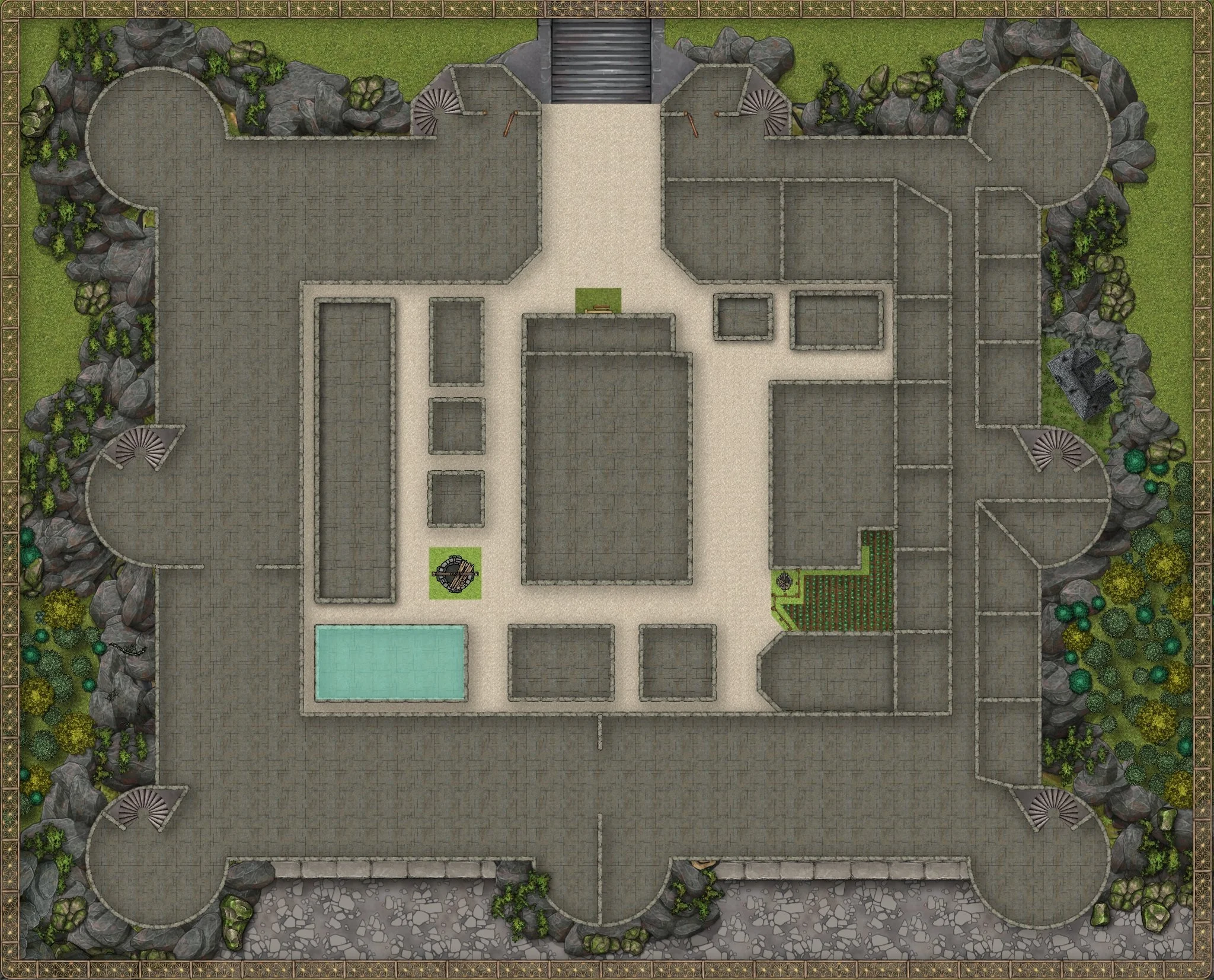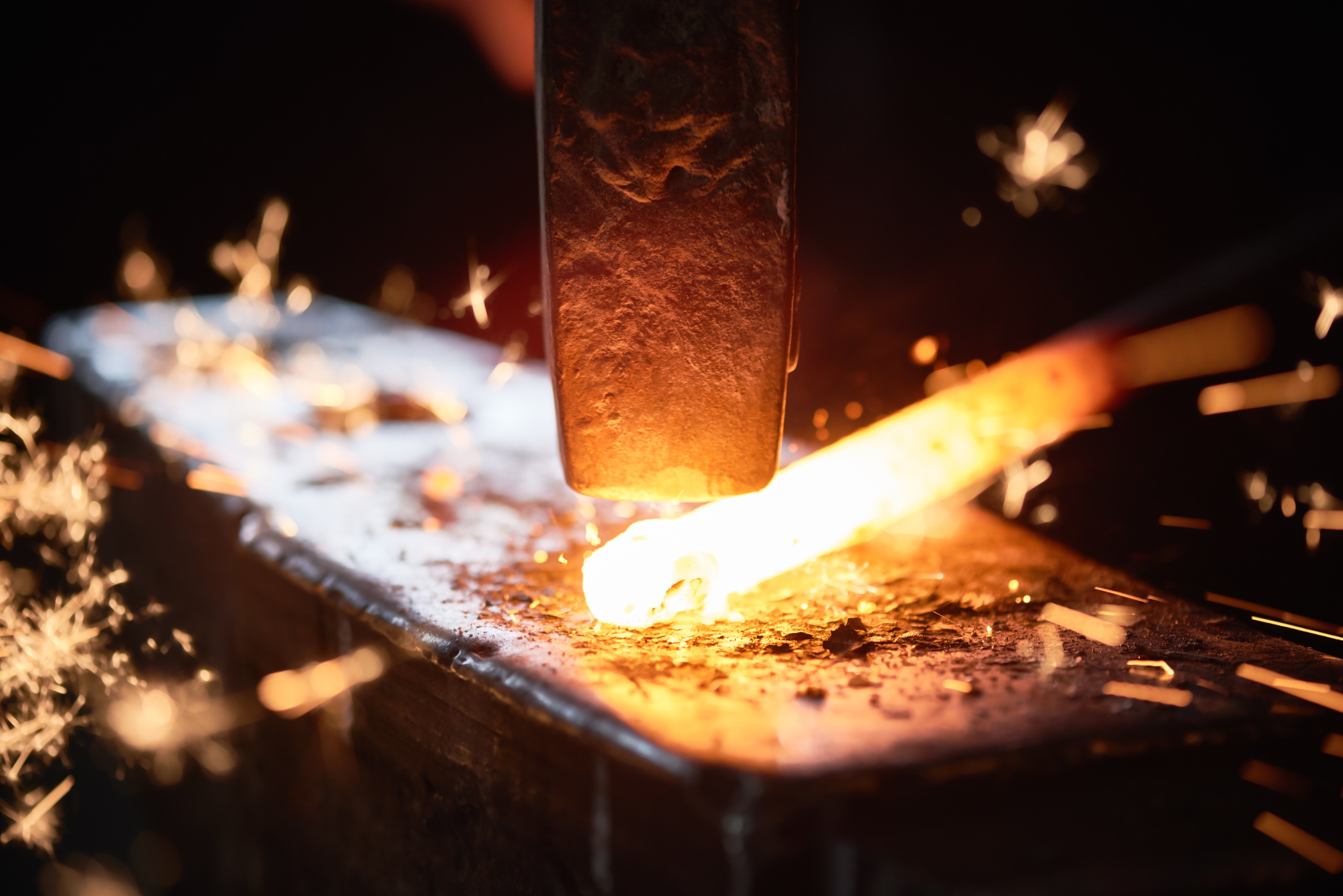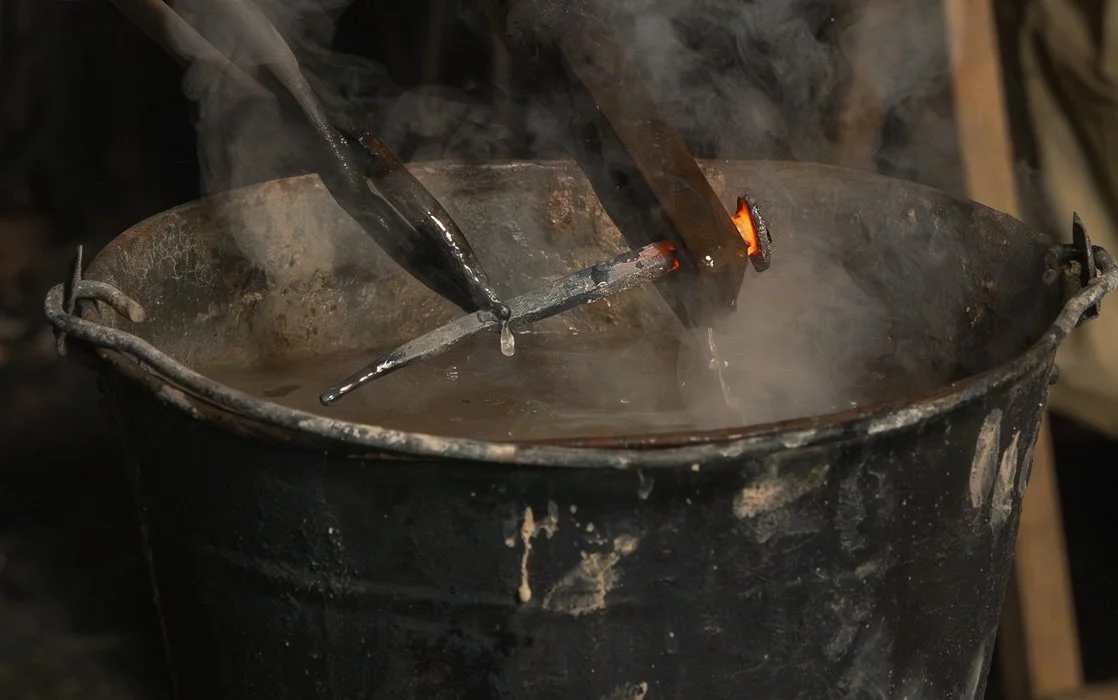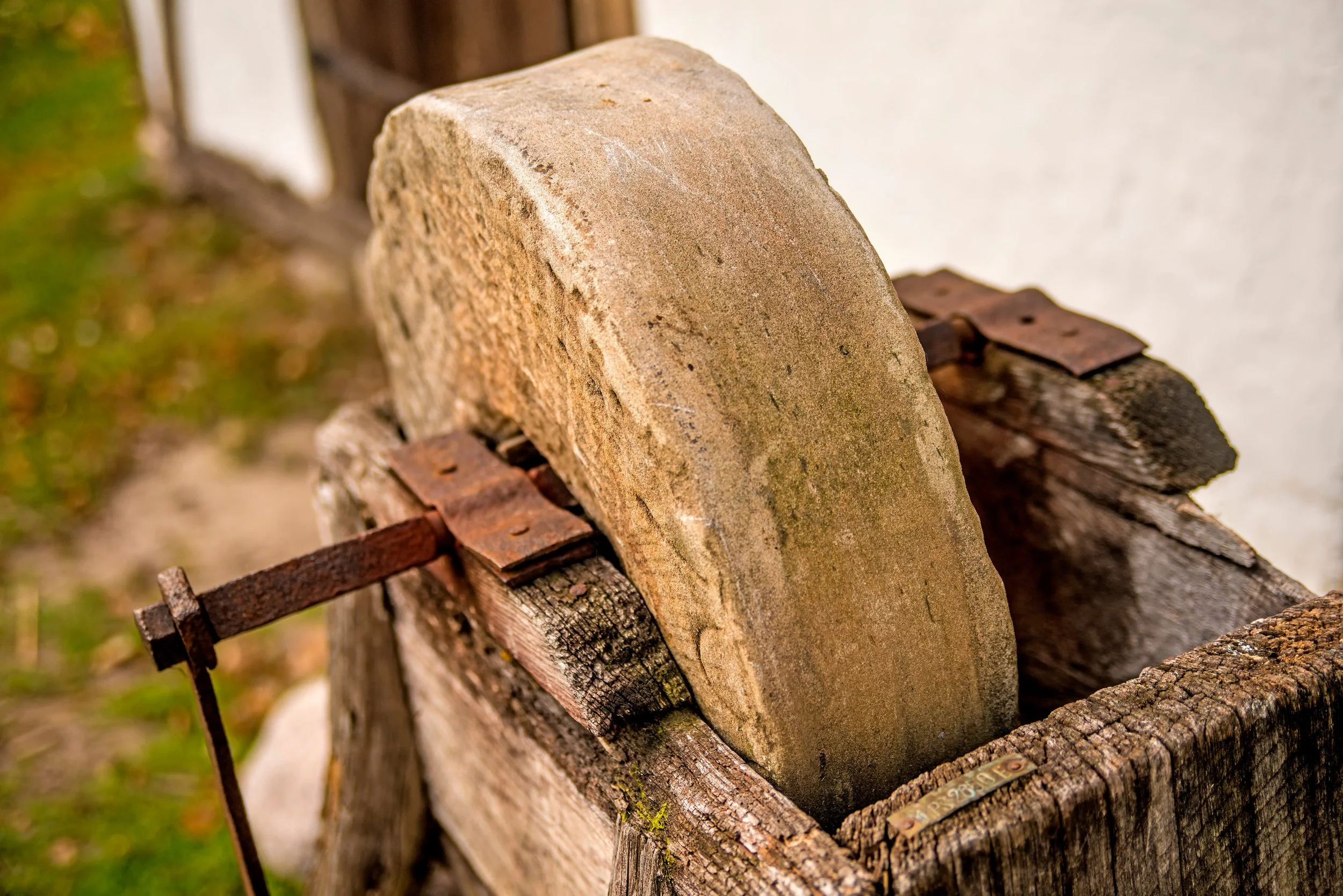The forge at Stachtenbaste is a place of constant heat and hammer sounds. Its fires are kept perpetually alive to meet the demands of the fortress. Here, weapons are shaped and sharpened for training and combat, while every manner of metalwork—tools, hinges, chains, and fittings—is made or mended as needed. It is as essential to the island’s self-sufficiency, ensuring nothing within the citadel’s purview need ever be sought beyond its walls.
Smithing in Aurelia, much like in the forges of the European High Middle Ages, is a craft of heat, precision, and skill. Steel, drawn from refined blooms and hammered into uniform billets, is heated in flames until it glows the right hue, indicating its temperature to the smith’s practiced eye. Bladesmiths, in particular, devote themselves to creating exceptional weapons with balance, resilience, and keenness of edge. Each finished blade bears its maker’s blood, sweat, and soul in a union of deadly purpose and hard-won honor.
A billet (solid length of metal) is heated to a workable temperature before drawing out or lengthening with a hammer and fullering (adding a central channel or groove) to reduce weight.
Forging
Metal is heated and cooled to relieve stresses and refine grain; hardened through heating followed by quenching in water, brine, or oil; and tempered through gentle reheating to remove brittleness.
Heat Treatment
Rough grinding is done using water-powered grindstones. Fine grinding and polishing are done by hand with progressively finer stones. Finally, the finish is bright-polished to reduce rust.







